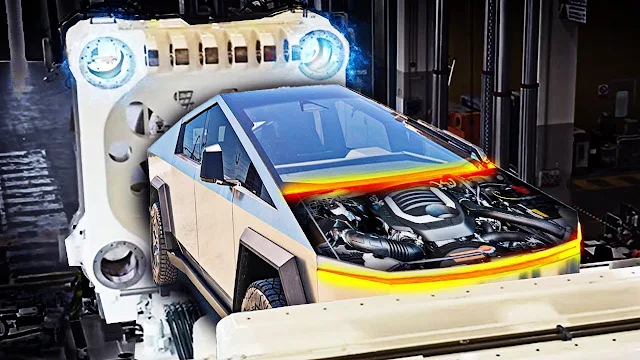
Revolutionizing Car Body Production with the Giga Press
Tesla's approach to car manufacturing has always been unconventional, and the introduction of the Giga Press is a prime example of their innovative spirit. This massive die-casting machine, weighing up to 430 tons and measuring 20 meters long, 7.5 meters tall, and 6 meters wide, has the power to cast entire sections of a vehicle in a single shot, revolutionizing the traditional automotive manufacturing process.
The Birth of the Giga Press
The idea behind the Giga Press was born from Tesla's relentless pursuit of efficiency and innovation. When Elon Musk and his team of engineers sought to find a way to make the manufacturing process of Tesla cars as cutting-edge as the vehicles themselves, they collaborated with a team of brilliant engineers to create a machine that could cast entire sections of vehicles at once.
The journey to the Giga Press was not without its challenges. Tesla reached out to six major press manufacturers worldwide, and five of them said it couldn't be done. Only one company, the Italian-based Idra Group, said "maybe." This "maybe" turned out to be a pivotal moment, as the Idra Group's general manager, Ricardo Ferrario, claimed the idea came to him in a dream, and he woke up with the mission to create the world's largest casting machine.
How the Giga Press Works
The Giga Press operates on a simple yet ingenious principle. It uses two sets of ovens to handle the aluminum alloy: a melting oven powered by natural gas that operates at 850 degrees Celsius, and a storage oven powered by electricity that maintains a temperature between 750 and 850 degrees Celsius.
At the core of the die-casting mechanism is the Giga Press itself, which applies a clamping force of 55,000 to 61,000 kilonewtons to the molten aluminum alloy, which can weigh up to 80 kilograms. The molten alloy is then injected into the casting mold at high speeds, and the press is closed. After about 90 seconds, the casting is complete, and the mold is cooled to 185 degrees Celsius. This entire process is automated, with robots performing tasks such as lubricating the mold, injecting the molten alloy, removing the casting, and trimming the excess material.
The Efficiency Advantage of the Giga Press
The Giga Press's ability to cast entire sections of a vehicle in a single shot is the key to its transformative impact on automotive manufacturing. By eliminating the need to produce multiple smaller components and then assemble them, Tesla has achieved remarkable efficiency gains.
For example, Elon Musk has stated that using the Giga Press to cast the rear underbody assembly on a Model Y allowed Tesla to go from making 70 small parts to a single giant part, eliminating 300 assembly robots and reducing the body shop space by 30%. Similarly, they were able to eliminate another 300 robots for the front underbody assembly.
These efficiency gains have had a profound impact on Tesla's financial performance. The company's cash conversion cycle, which measures the time it takes to convert cash into a car and then sell that car to generate cash flow, was negative 15 days in 2021. This means that Tesla cars are sold even before they have to pay to manufacture them. In contrast, Toyota's cash conversion cycle in 2021 was 31 days, and Volkswagen's was 74 days.
The Disruptive Potential of the Giga Press
The Giga Press is not just a technological marvel; it is a strategic weapon in Tesla's arsenal to disrupt the automotive industry. By eliminating the need for multiple stamped and welded components, the Giga Press has allowed Tesla to claim a profit margin of over 30% on its cars, which is unheard of in the automotive world.
As Tesla continues to refine and expand the use of the Giga Press, the company may reach a point where they can use it to make the entire car chassis in a single shot, further streamlining the manufacturing process and solidifying their position as the industry's most efficient automaker.
Conclusion
The Giga Press is a testament to Tesla's relentless pursuit of innovation and efficiency in automotive manufacturing. By leveraging this revolutionary die-casting machine, the company has not only transformed the way cars are made but has also gained a significant competitive advantage in the electric vehicle market. As the Giga Press continues to evolve and be deployed in Tesla's global network of factories, the automotive industry can expect to see even more disruption and innovation in the years to come.





.jpg)


0 Comments